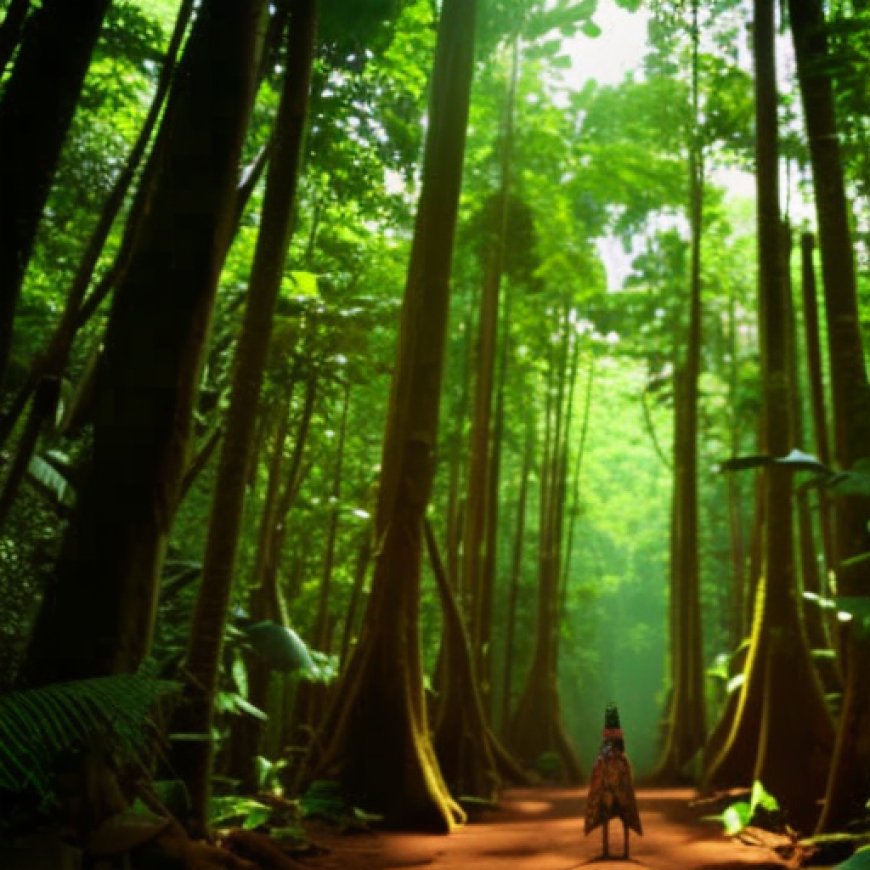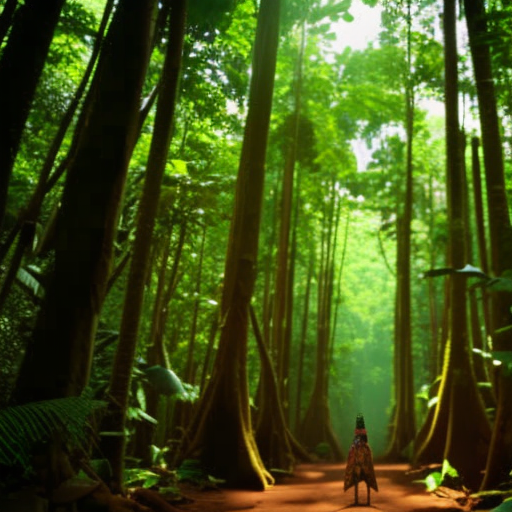Indonesia awards biggest Indigenous forest claim yet to Bornean Dayaks
Indonesia awards biggest Indigenous forest claim yet to Bornean ... Mongabay.com


The Indonesian Government Recognizes Indigenous Dayak Communities’ Rights to Forests in Borneo
The Indonesian government has officially recognized the biggest swath yet of forests that fall under the ancestral domain of an Indigenous group, awarding rights to nearly 70,000 hectares (173,000 acres) in Borneo. It took the government 11 years to grant this recognition to the 15 Indigenous Dayak communities that had applied for it, according to the nation’s main Indigenous alliance, AMAN. There are many more customary forests yet to be recognized in the region, with activists calling on the government to speed up the recognition process.
Recognition of Ancestral Forests in Gunung Mas District
The Indonesian government has recognized the rights of 15 Indigenous Dayak communities to forests on Borneo covering a combined area larger than Jakarta. The nearly 70,000 hectares (173,000 acres) is the largest cluster of customary forests ever recognized by the state. The recognition of these ancestral forests in Gunung Mas district, Central Kalimantan province, was celebrated on August 8, just in time for the International Day of the World’s Indigenous Peoples.

The recognition of these ancestral forests is a significant achievement for the Indigenous peoples of Gunung Mas, who had initiated the process more than 11 years ago. The main challenge they faced was the lack of commitment from the local government. However, their perseverance has paid off, and they can now exercise their rights over these forests.
President Joko Widodo’s Social Forestry Program
The recognition of the ancestral forests is part of President Joko Widodo’s flagship social forestry program. This program aims to reallocate 12.7 million hectares (31.4 million acres) of state forests to local communities and provide them with legal standing to manage their forests for 35 years. The official recognition of customary forests goes even further, as it involves the government relinquishing its control over the forests to the communities permanently.
By recognizing the customary forests in Gunung Mas, the government hopes to improve the livelihoods of the Dayak communities. It also serves as an inspiration for other district heads to push for the recognition of customary forests in their regions.
Challenges and Future Recognition
The recognition of customary forests requires local governments to issue bylaws that acknowledge the ancestral land rights of Indigenous communities. These bylaws serve as the basis for the application to the environment ministry in Jakarta for recognition of the territories associated with those rights.
While progress has been made in recognizing customary forests, there are still many Indigenous communities in Central Kalimantan fighting for the recognition of their ancestral forest rights at the district level. According to data from the Ancestral Domain Registration Agency (BRWA), more than 775,000 hectares (1.92 million acres) of customary forests in Central Kalimantan could potentially be recognized. However, the environment ministry has only recognized 126,911 hectares (313,604 acres) of customary forests in the region so far.
Recognizing more customary forests is crucial to protect and support the Indigenous peoples in Central Kalimantan. It is an essential step towards achieving the Sustainable Development Goals (SDGs) set by the United Nations, particularly Goal 15: Life on Land, which aims to protect, restore, and promote sustainable use of terrestrial ecosystems.
Banner image: The Dayak Tomun community in Borneo island. Image by Indra Nugraha/Mongabay Indonesia.
Feedback
Use this form to send a message to the author of this post. If you want to post a public comment, you can do that at the bottom of the page.
Tags
- Activism
- Environment
- Forests
- Indigenous Communities
- Indigenous Groups
- Indigenous Peoples
- Indigenous Rights
- Land Reform
- Land Rights
- Protected Areas
- Rainforests
- SDG 15: Life on Land
- SDG 16: Peace, Justice, and Strong Institutions
- SDG 15.2: By 2020, promote the implementation of sustainable management of all types of forests, halt deforestation, restore degraded forests, and substantially increase afforestation and reforestation globally.
- SDG 16.7: Ensure responsive, inclusive, participatory, and representative decision-making at all levels.
- Number of hectares of customary forests recognized and granted rights
- Number of Indigenous communities with recognized ancestral land rights
- Number of local government bylaws issued recognizing ancestral land rights
SDGs, Targets, and Indicators Analysis
1. Which SDGs are addressed or connected to the issues highlighted in the article?
The article discusses the recognition of Indigenous Dayak communities’ rights to forests in Borneo. This issue is related to SDG 15, which focuses on protecting, restoring, and promoting sustainable use of terrestrial ecosystems, and SDG 16, which aims to promote peaceful and inclusive societies for sustainable development.
2. What specific targets under those SDGs can be identified based on the article’s content?
The article highlights the recognition of customary forests as part of President Joko Widodo’s social forestry program. This aligns with SDG 15.2, as it promotes sustainable forest management and the protection of forests. Additionally, the article mentions the challenges faced by Indigenous communities in obtaining recognition due to a lack of commitment from local governments, which relates to SDG 16.7’s target of inclusive and participatory decision-making.
3. Are there any indicators mentioned or implied in the article that can be used to measure progress towards the identified targets?
The article mentions the recognition of nearly 70,000 hectares of customary forests for 15 Indigenous Dayak communities. This indicates progress towards the target of promoting sustainable forest management (SDG 15.2). The article also highlights the need for local government bylaws to recognize ancestral land rights, which can be used as an indicator to measure progress towards inclusive decision-making (SDG 16.7).
Table: SDGs, Targets, and Indicators
| SDGs | Targets | Indicators |
|---|---|---|
| SDG 15: Life on Land | 15.2: By 2020, promote the implementation of sustainable management of all types of forests, halt deforestation, restore degraded forests, and substantially increase afforestation and reforestation globally. | – Number of hectares of customary forests recognized and granted rights – Number of Indigenous communities with recognized ancestral land rights |
| SDG 16: Peace, Justice, and Strong Institutions | 16.7: Ensure responsive, inclusive, participatory, and representative decision-making at all levels. | – Number of local government bylaws issued recognizing ancestral land rights |
Behold! This splendid article springs forth from the wellspring of knowledge, shaped by a wondrous proprietary AI technology that delved into a vast ocean of data, illuminating the path towards the Sustainable Development Goals. Remember that all rights are reserved by SDG Investors LLC, empowering us to champion progress together.
Source: news.mongabay.com

Join us, as fellow seekers of change, on a transformative journey at https://sdgtalks.ai/welcome, where you can become a member and actively contribute to shaping a brighter future.







